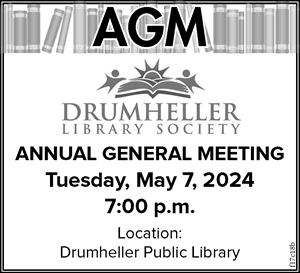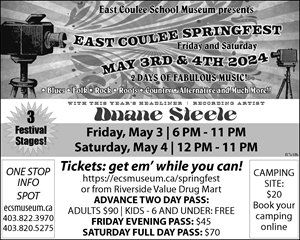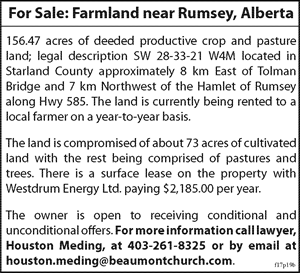If buckets could talk, the tales they would tell.
After a donation by Ed Cheney on Thursday, January 10, the Atlas Coal Mine now have a mining bucket that has quite the story. It is believed this particular bucket was present during some of the highs and lows of the history of the Drumheller Valley.
“His (Cheney’s) dad (Ralph) purchased the bucket from a junk dealer in town and it is believed it came from the Star Mine. Whether or not it came from the Star Mine, it’s a pretty rare and special thing,” said Jay Russell, Atlas Coal Mine program director.
“Mine buckets were used to hoist men, coal, tools, and rock, and were often employed in mine construction. We are very pleased to receive this historically important artifact.”
After Ralph Cheney purchased the bucket for his crane business, it was used in the construction of some of Drumheller’s most iconic features.
“This particular bucket was not just used in the mine, it was used in the transition years for Drumheller; going from a boomtown to a tourist town. It was used in the construction of at least two major things,” said Russell. “One was as a man lift to put the letters on the Drumheller Inn and landscaping around the Royal Tyrrell Museum during its construction.”

Linda Digby (left), Director of the Atlas Coal Mine, and Kelly Eddy stand inside the newest edition to the collections; a mine bucket. The bucket would have been used to hoist coal, rock, tools, and even men. The bucket was later used to put the “INN” on the Drumheller Inn and in the construction of the Royal Tyrrell Museum.
Prior to that, the history of the bucket is less certain, but certainly encompasses most, if not all, of the history of mining in the Valley. Mining buckets, perhaps even the very one the Atlas received, were involved in several deaths in the mines.
“These buckets were used in the early days of mining here. In 1928, a miner was killed when working in a shaft. The bucket let go and fell on him. In 1935, a pitboss at Willow Creek was inspecting new mine in Rosedale and was lowered in bucket. He hit gas, fell unconscious, fell out of the bucket, and died,” said Russell.
“If it (the Atlas bucket) is from the Star Mine that would be interesting, because in 1956, a miner fell out of a bucket to his death. The bucket would have ties to our history, our transition, and to our Miners’ Memorial.”
Mining buckets are rare. When mines shut down, the were sold as scrap metal or were repurposed for other industries.
The Atlas hopes to incorporate the bucket into another exhibit.
“This in an important artifact and represents an aspect of mining we’re just learning about. We’d like to make it an exhibit here, but it’s in the preliminary stages at this point,” said Russell. “It’s unique, an important artifact, and a piece of our history.”

A mine bucket (maybe the very one the Atlas received) being used at the Miller Mine, between Wayne and Beynon, circa 1918.



























